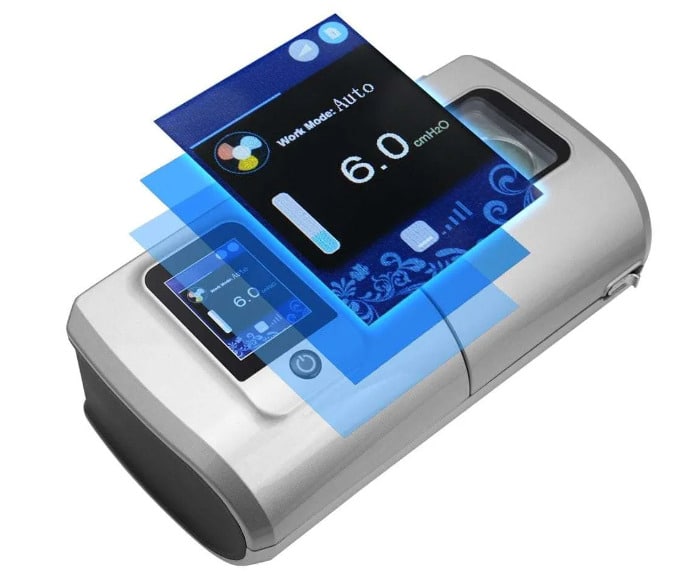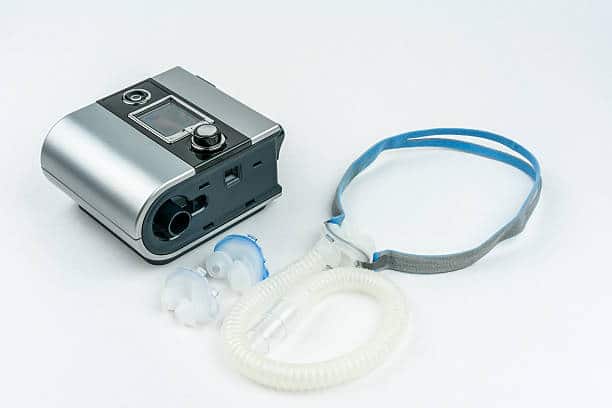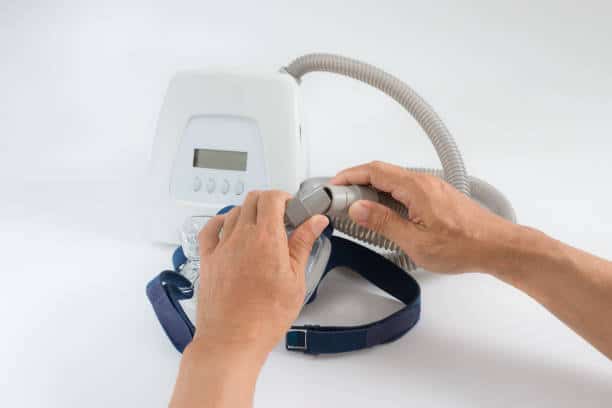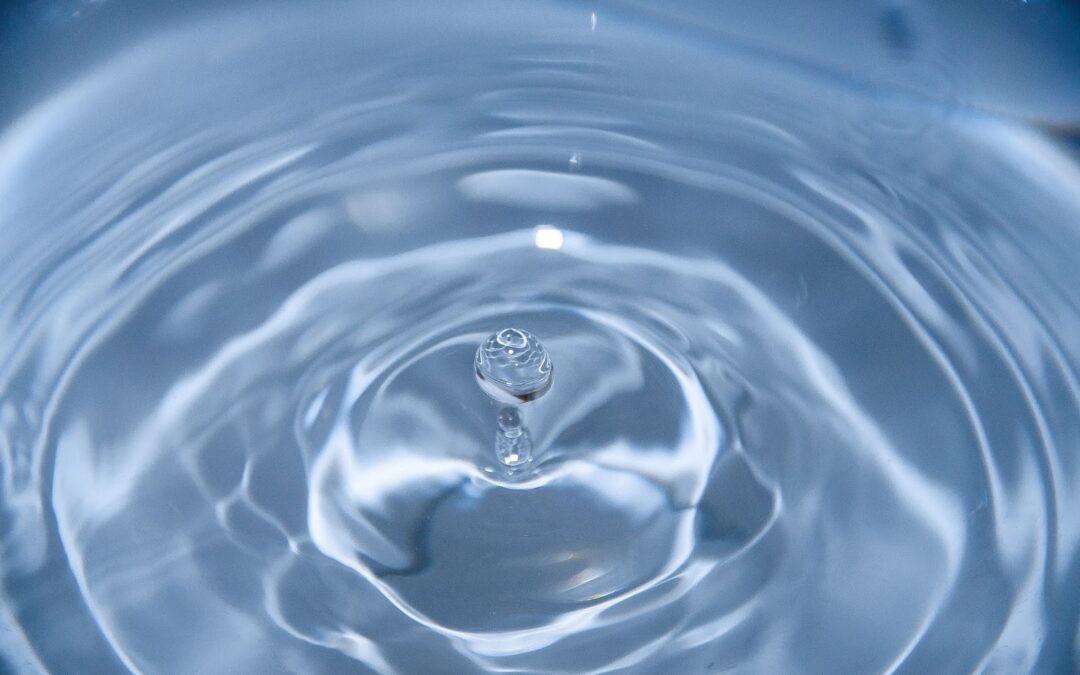Trying to pick between APAP and CPAP machines? You’re not alone. As we get older, getting good sleep becomes even more critical. The whole APAP vs CPAP debate can be a bit confusing, but we’re here to help. We’ll break things down simply so you can figure out which one’s the best fit for you.
In this guide, we’ll walk you through the basics of each machine, their pros and cons, and what other folks in similar situations have found helpful. By the end, you’ll have a clearer picture and be one step closer to better, uninterrupted sleep.
Understanding APAP Machines

The world of sleep apnea treatments can sometimes feel like a maze, but understanding the tools at our disposal is the first step to navigating it effectively. Enter the APAP machine, a device that’s been gaining traction for its adaptability and user-centric approach.
At its core, APAP stands for Automatic Positive Airway Pressure. This name gives away its primary feature: the ability to automatically adjust its pressure settings in real-time, responding to the unique breathing patterns of the user.
How APAP works
The APAP is more dynamic than machines that deliver a fixed, unchanging air pressure. It uses advanced sensors to monitor your breathing throughout the night. When it detects an obstruction or irregularity, it adjusts the pressure accordingly, ensuring that your airway remains open and you continue breathing comfortably.
Benefits
1. Adaptability
The APAP’s strength lies in its ability to cater to the individual. Whether deep in REM sleep, tossing and turning, or lying still, the machine adjusts its pressure to suit your current state.
2. Enhanced Comfort
Many users report that the variable pressure of the APAP feels more natural and less intrusive than a constant stream of air. This can lead to a more restful night’s sleep and increased compliance with treatment.
3. Versatility for Varying Needs
The APAP is designed to handle these fluctuations seamlessly if your breathing patterns or pressure needs change frequently at night.
Limitations
1. Higher Initial Cost
Innovation often comes at a price. While prices have decreased as technology becomes more widespread, APAP machines still generally command a higher price point than standard CPAP machines.
2. Potential for Disruption
Only some appreciate the variability. Some users, especially those transitioning from a CPAP device, might find the changing pressures of an APAP machine unsettling until they get used to it.
3. Specificity of Treatment
While the APAP is a versatile tool, it’s not universally ideal. Certain types of sleep apnea patients or specific medical conditions might benefit more from the consistent pressure of a CPAP machine.
Now, Let’s Understand CPAP Machines

When discussing sleep apnea treatments, the CPAP machine is often the first point of reference for many. It’s been the gold standard for years, and for good reason. Let’s delve deeper into what makes the CPAP therapy a trusted choice for many.
CPAP stands for Continuous Positive Airway Pressure. The keyword here is “continuous.” Unlike the APAP, which adjusts its pressure settings, the CPAP delivers a steady and unchanging stream of pressurized air all throughout the night.
How CPAP works
The machine is calibrated, often through a sleep study, to provide a specific pressure that keeps your airway open. This pressure remains consistent, ensuring that obstructions are prevented, and you can breathe without interruptions.
Benefits
1. Consistency
For many, the predictability of the CPAP is its main selling point. You know what to expect each night, which can be reassuring.
2. Proven Track Record
CPAP machines have been around for a while and have a long history of effectively treating obstructive sleep apnea.
3. Cost-Effective
Generally, CPAP machines are more affordable than their APAP counterparts, making them accessible to a broader range of users.
Limitations
1. Fixed Pressure
While the consistent pressure benefits some, others might find it uncomfortable, especially if their needs change during the night.
2. Adjustment Period
Some users feel “overwhelmed” by the constant air pressure when they first start using a CPAP, though many adjust over time.
3. Manual Calibration
If your pressure needs to change, the machine typically requires manual recalibration, which might necessitate another sleep study or a visit to your healthcare provider.
APAP vs CPAP: Key Considerations
| Criteria/Aspect | APAP Machine | CPAP Machine |
|---|---|---|
| Nature and Severity of Sleep Apnea | Adaptability makes it suitable for those with varying pressure needs throughout the night. | Consistent pressure is often recommended for moderate to severe obstructive sleep apnea. |
| Comfort and Adaptability | Variable pressure can feel more natural and less intrusive for some users. | The constant pressure might overwhelm some, but others appreciate the predictability. |
| Budgetary Constraints | Generally pricier than CPAP machines. | More budget-friendly in comparison to APAP machines. |
| Portability | Modern machines are designed to be compact and travel-friendly, but specific models may vary. | Machines also come in travel-friendly designs, but the size and weight vary based on the model. |
| Data and Feedback | Advanced models offer detailed data tracking and feedback on user’s sleep patterns. | Machines provide data, but the insights might need to be more detailed than some APAP models. |
| Ease of Maintenance | Might require more regular check-ups and maintenance due to advanced features. | Being more straightforward, often have simpler maintenance routines. |
| Noise Level | Due to their variable pressures, some machines might produce varying noise levels. | Generally produce a consistent noise level due to their steady pressure. |
| Initial Setup | Might need a more detailed setup to ensure accurate auto-adjustments. | Setups are often more straightforward, with a set pressure determined by a sleep study. |
| Long-Term Reliability | As a newer technology, the long-term reliability is still being studied. | Have a longer track record and are known for their durability and reliability. |
| User Feedback & Reviews | User feedback is generally positive, especially regarding comfort and adaptability. | Have been around longer and have a wide range of user feedback, with many praising their consistency. |
Maintenance and Care

Daily Routine
Every day, it’s essential to give attention to the mask and tubing of your APAP or CPAP machine. Cleaning these components removes residues like oils and sweat that accumulate with use.
A simple wash with warm, soapy water, followed by a thorough rinse and air drying away from direct sunlight, is sufficient.
For those using machines with a humidifier, it’s a good practice to empty and refill it daily. Distilled water can help prevent mineral deposits, ensuring the humidifier functions optimally.
Weekly Attention
Every week, the filters demand your attention. Foam filters can be gently rinsed and left to air dry, while white paper filters should be replaced once they appear dirty or clogged.
Additionally, the humidifier chamber benefits from a weekly cleaning. Disassembling it and cleaning it with warm, soapy water ensures it remains free from unwanted build-up. After cleaning, rinse it well and let it air dry.
Monthly Inspections
As the weeks roll on, a monthly check of the hoses and mask components can prevent unforeseen issues. Hoses can develop wear or minor damages that might compromise the machine’s efficiency.
Similarly, the mask’s cushion and headgear can show signs of wear. It’s advisable to replace any less effective or worn-out component to maintain optimal performance.
Must Read: The Ultimate Guide To Dealing With Water In The CPAP Hose
Yearly Check
Lastly, an annual professional review of your machine is a wise step. This check-up ensures that the machine is calibrated correctly and functioning as intended and helps identify potential issues before they become significant problems.
General Care Tips
For the overall well-being of your machine, some general guidelines are worth noting. Avoid using harsh chemicals like bleach or alcohol for cleaning, as these can degrade the machine’s components and might leave harmful residues.
Parts like masks and hoses have a finite lifespan. Proactively replacing them based on the manufacturer’s recommendations ensures the machine’s effectiveness. And when the machine is not in active use, storing it in a dry, clean place away from extreme conditions can prolong its life.
Importance of Professional Guidance
Understanding your unique medical and sleep needs is paramount when choosing between APAP devices and CPAP machines. General information and personal anecdotes can be informative but don’t always reflect individual nuances or the most effective treatment options.
Take Note: Always prioritize expert guidance. Making decisions based solely on broad information can lead to subpar treatment choices. Ensure your choices are tailored to your specific needs.
Now, Which is Right For You?
In the debate of APAP vs CPAP, both machines offer distinct approaches to treat sleep apnea. While APAP provides adaptability with real-time pressure adjustments, CPAP offers consistency with its continuous air pressure.
Beyond these technical distinctions, it’s crucial to remember that sleep apnea treatment should be personalized. What works for one individual might not be the best for another. Always prioritize treatments tailored to your unique needs, ensuring optimal results and comfort. For the best water quality in your devices, consider using distilled water from Amazon. Thanks for reading, and see you at the next one!
What were your primary learnings after reading this?



